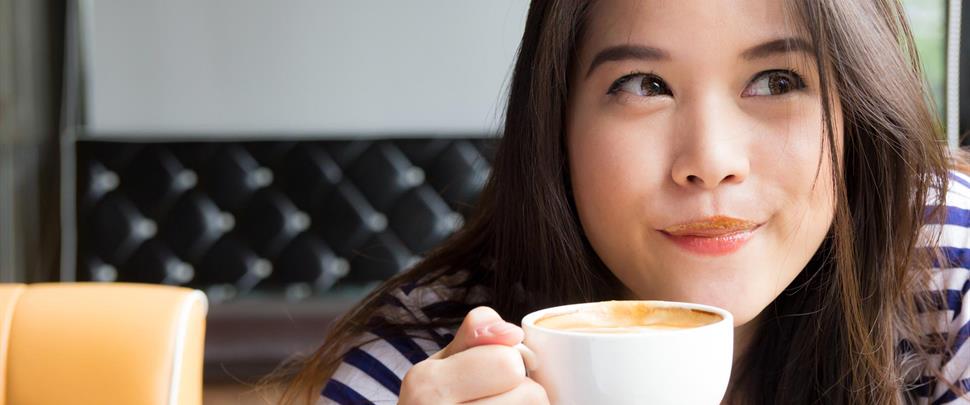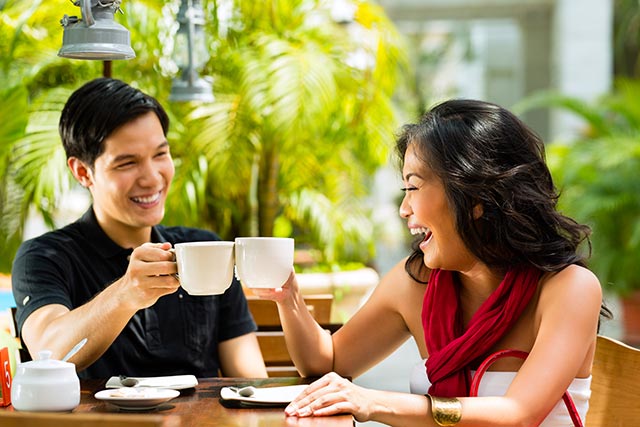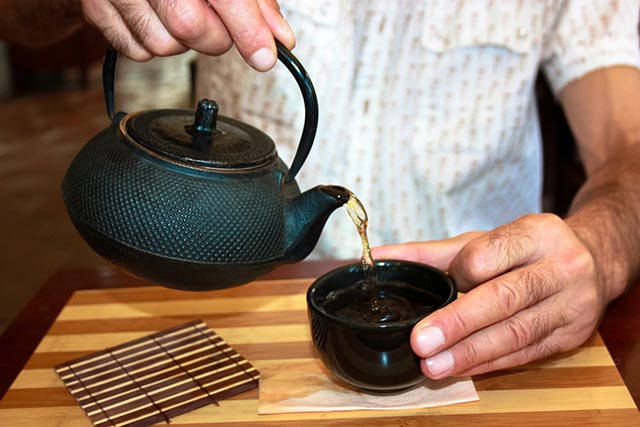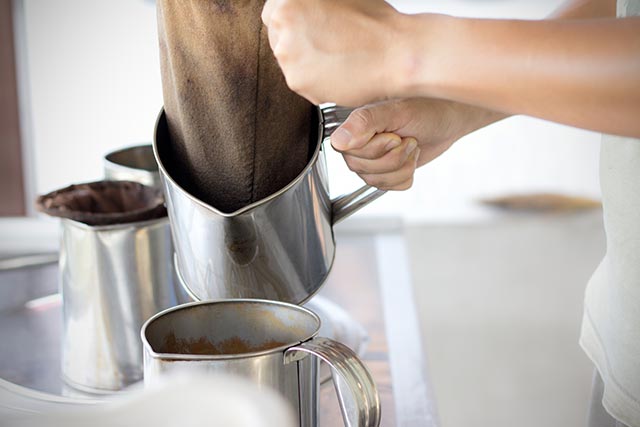“Getting Your Caffeine Hit” by Health Promotion Board, 2 Sep 2019, www.healthhub.sg

Caffeine Effects
For a long time, the consumption of caffeinated drinks such as coffee and tea was associated with cardiovascular problems, such as hypertension, rhythm disturbances and heart attacks. Yet in recent years, literature seems to point towards the suggested benefits of coffee and tea consumption, ranging from improved cognitive ability to reduced risk for cancer, gallstones, Parkinson’s and even coronary disease.
Let’s get through all the clutter of information and take a look at what we know for sure.
Benefits of Caffeine

After constantly being nagged at about how they should be cutting down on their daily cuppa, coffee connoisseurs and tea aficionados will have their hands in the air rejoicing that their favourite drink is actually good for them! There is, however, a caveat: that they be consumed in moderation, preferably unsweetened.
Coffee and tea are rich in antioxidants that help to fight free radicals. These free radicals are elements that damage our cells and have been linked with health issues.
Besides being a source of antioxidants, coffee and tea also contain caffeine, which when taken in moderation (not more than 400mg* a day) can have benefits for your body[1]. This stimulant promotes the increased firing of neurons and has been shown to improve various aspects of brain function, including memory, mood, energy levels and general cognitive function[2]. Certain studies[3], [4] also suggest links to reduced risks of Alzheimer’s and dementia.
In addition, tea also contains catechins, which has numerous benefits such as lowering blood pressure and cholesterol levels[5]. And, while it doesn’t actually help with weight loss, it is a great alternative to sugary drinks.
*In general, one cup of coffee contains 60 to 180 mg of caffeine, while one cup of tea contains 14 to 70 mg of caffeine. These figures are just estimates, and can vary according to the type and brewing process.
Related: Say Siu Dai Instead
Dangers of Caffeine
Now, slow down a minute. While caffeine has its advantages, it is unfortunately still a drug which can cause dependency. Just as with other addictive substances, people who try to quit drinking coffee and tea have been known to exhibit withdrawal symptoms, such as headaches and fatigue.
Caffeine is also not suitable for people suffering from insomnia, as it is known to increase anxiety. Disruptive sleep patterns occur when caffeine is taken during the day to combat fatigue, while its effects continue to spill over into restless sleep during the night.
Coffee and tea are also a no-no for those with stomach problems, such as acid reflux or heartburn. In particular, coffee is highly acidic and irritates the gastrointestinal tract. If you have acid reflux, caffeine in general is not ideal as it relaxes the sphincter muscle that normally prevents stomach acid from bubbling up the oesophagus.
My Cup of Tea

Not all teas are made equal. So what are the different types of tea and how do they differ?
First, ‘true’ tea originates from the Camellia sinensis plant. Chamomile, peppermint and other teas that do not come from the Camellia sinensis plant are not considered ‘true’ teas but herbal or infusion teas.
Within the realm of tea, you will find four categories: black, oolong, green and white. These terms refer to the tea’s oxidisation levels, with black being fully oxidised, oolong — partly oxidised, and green and white tea — unoxidised.
White tea is the most precious of all the teas, as they are harvested by hand for a few days each spring. Only the baby tea leaves are picked and this is the least processed of all the teas. White tea is made from the bud from the tip of the plant, which is full of nutrients.
Green tea also undergoes very little processing and is rich in catechins, which is one of nature’s most powerful antioxidants.
Black tea, known in some countries as red tea, comes from leaves that are fully oxidised. Tea varieties such as English Breakfast and Earl Grey fall into this category. Because of the oxidisation process it goes through, black tea contains less catechins, but is rich in the antioxidant theaflavin.
Finally, oolong is a cross between green and black tea, as its leaves are semi-oxidised. The outer part of the leaf is allowed to oxidise, while the inside of the leaf is kept green. Because of this unique process, oolong tea contains antioxidant profiles of both green tea (catechins) and black tea (theaflavins).
In a standard cup (237 ml), you will find around 14 to 70 mg of caffeine in black tea and 24 to 45 mg of caffeine in green tea. The caffeine content in ready-to-drink bottles ranges from 5 to 40 mg. Take note that even decaffeinated tea can contain up to 12 mg of caffeine.
Related: Tea - An Old Beverage Chock Full of Benefits
Crash Course on Coffee

It can be overwhelming when you are confronted with the numerous options for coffee available today. Let’s get you started with some useful facts.
Coffee beans are broadly categorised into Arabica and Robusta. Arabica is generally accepted as the more prized of the two as it’s more expensive. Robusta beans are easier to grow and are often blended with Arabica beans or used in cheaper coffee products.
In Singapore, you will normally find Arabica or Arabica/Robusta blends in your western-style cafés, while Robusta beans are mostly used for kopi in local coffee shops. Robusta beans are typically described to be more bitter than its counterpart, which is a result of its increased caffeine content (2.7% for Robusta vs. 1.5% for Arabica).
It might be interesting to note that local kopi gets its distinctive flavour from its roasting process, where the beans are roasted with margarine. Because of its bitter taste, kopi is often taken with sugar and sweetened condensed milk to help mask some of the harsher flavours.
At the other end of the coffee culture spectrum, many believe that espressos are the fastest way to get your caffeine fix. However, because espressos are served in smaller doses, you will often get more caffeine from a mug of brewed coffee as compared to a cup of espresso.
As a rough guide, you get around 30 to 50mg of caffeine per espresso shot (30ml), compared to around 60 to 100mg of caffeine in a cup of brewed coffee (250ml). It is important therefore to find out how many espresso shots are in your espresso-based drinks such as Americanos, cappuccinos and lattes. For example, when you order a large latte, you may be consuming up to three shots of espresso.
So How Much is Safe?
For most healthy adults, the recommended amount of coffee and tea you can drink in a day is around four and five cups respectively (400mg). Children, however, should keep their intake of caffeine to a minimum, while adolescents can consume around 100mg of caffeine (approximately 1 cup of coffee/tea) or about a quarter of the amount for an adult.
The effects of caffeine can also vary from person to person, so consider cutting down your intake if you experience any of the following side effects:
Insomnia
Anxiety
Irritability
Stomach discomfort
Muscle tremors
When taken in moderation, coffee and tea help contribute to the body’s daily hydration needs. However, they should not replace water as the only hydrating beverage.
Do also note that once you ply your coffee and tea with sugar and milk, other factors such as calories will come into play.
Here’s a table with some of the common types of coffee and tea and how to order them:
Local Coffee Shop |
Name | Description | Alternative ways to order |
Kopi ‘O’ / Teh ‘O’ | Coffee/tea with sugar and no milk | Kosong — no sugar
Siu Dai — less sugar
Poh — weaker
Gao — stronger |
Kopi / Teh | Coffee/tea with sugar and condensed milk | Siu Dai — less sugar
Poh — weaker
Gao — stronger |
Kopi ‘C’ / Teh ‘C’ | Coffee/tea with sugar and evaporated milk | Kosong — no sugar
Siu Dai — less sugar
Poh — weaker
Gao — stronger |
Western Style Café |
Name | Description | Alternative ways to order |
Espresso | 30ml shot of intense black coffee | Double / Triple — two or three shots of espresso |
Cappuccino | 1/3 espresso, 1/3 steamed milk, 1/3 foamed milk | Double / Triple — two or three shots of espresso
Skinny — replace regular milk with low fat milk
Soy — replace regular milk with soy milk |
Latte | 1/6 espresso, 4/6 steamed milk, 1/6 foamed milk |
Mocha | 2/5 espresso, 2/5 chocolate, 1/5 steamed milk |
Flat White | 1/3 espresso, 2/3 steamed milk |
Americano / Long Black | Espresso topped up with water | Double / Triple — two or three shots of espresso |
Ultimately, as with all foods and drinks, coffee and tea should be consumed in moderation. Choose unsweetened or lower sugar options for a healthier choice.
References
1. Nawrot, P., Jordan, S., Eastwood, J., Rotstein, J., Hugenholtz, A., Feeley, M. (2003, January). Effects of caffeine on human health. Food Additives and Contaminants, 20(1), pp. 1-30.
Retrieved February, 2016.
2. Gunnars, K. (2015, December). 13 Proven Health Benefits of Coffee [Website Article].
Retrieved February, 2016.
3. Maia, L., De Mendonça, A. (2002). Does caffeine intake protect from Alzheimer's disease?. European Journal of Neurology, 9(4), pp.377—382.
Retrieved February, 2016.
4. Santos, C., Costa, J., Santos, J., Vaz-Carneiro, A., Lunet, N. (2010). Caffeine intake and dementia: systematic review and meta-analysis. Journal of Alzheimer’s Disease, 20(1), pp. 187-204.
Retrieved February, 2016.
5. Paula, S. (2013, September). Health Benefits of Green Tea [Website Article].
Retrieved April, 2016.